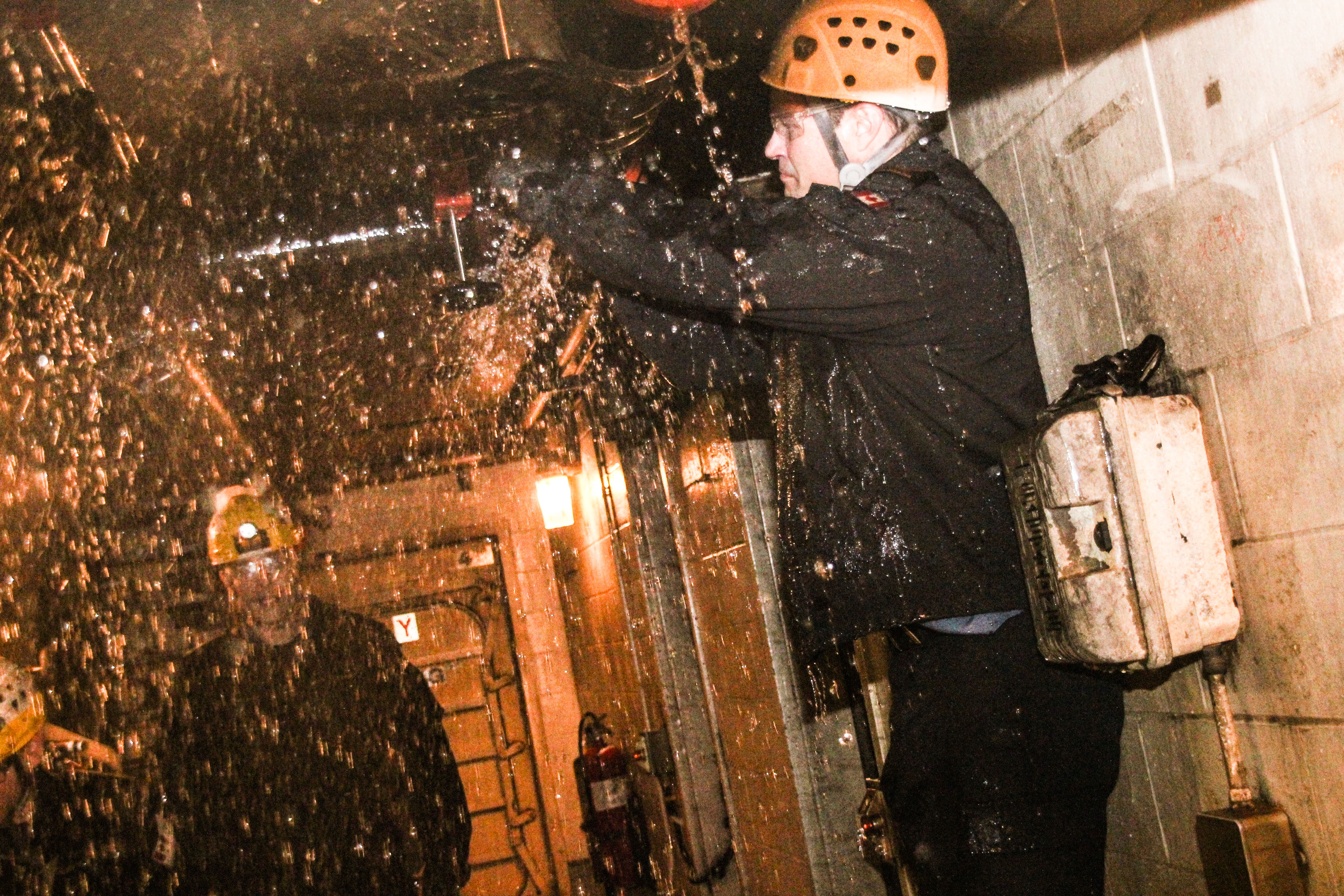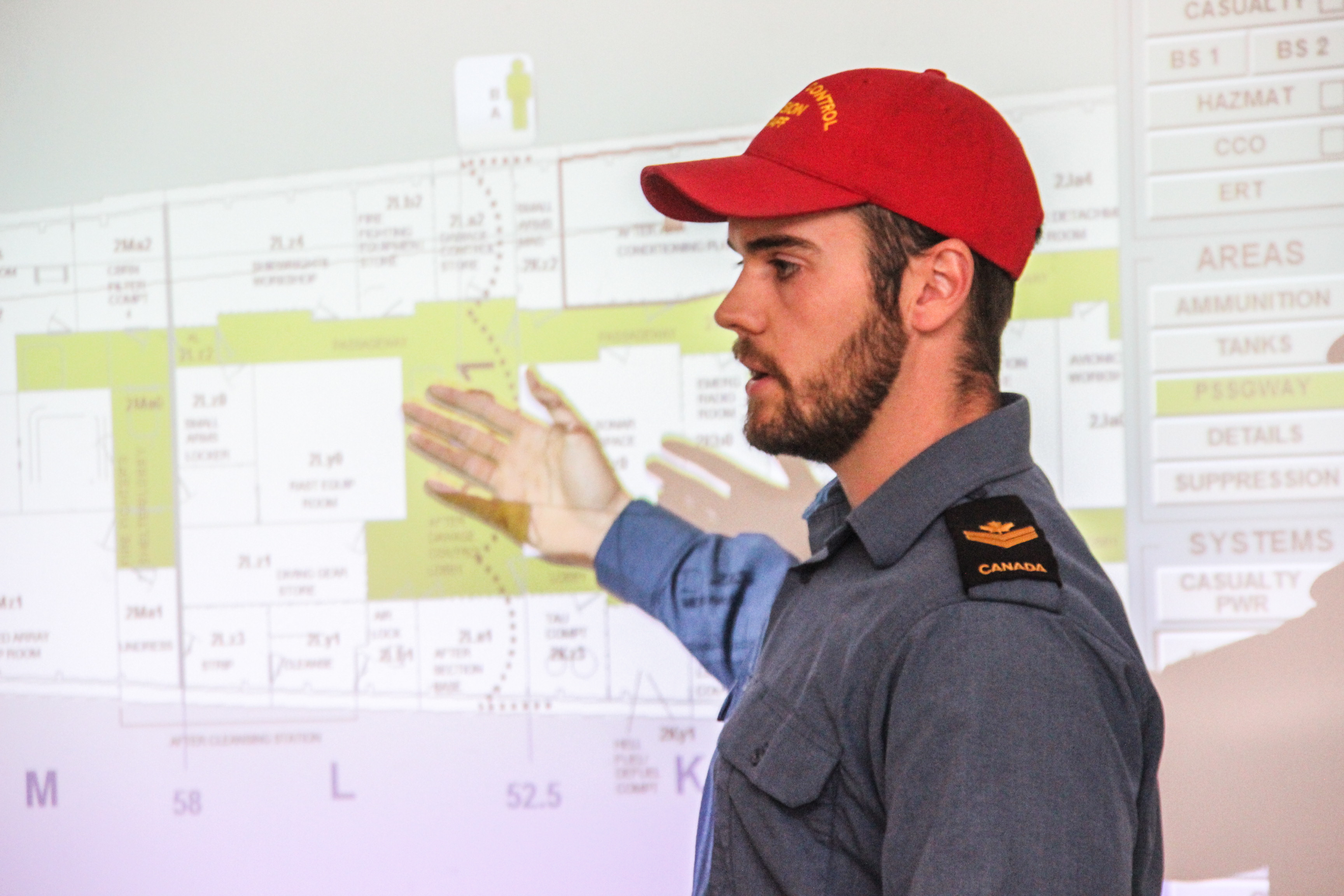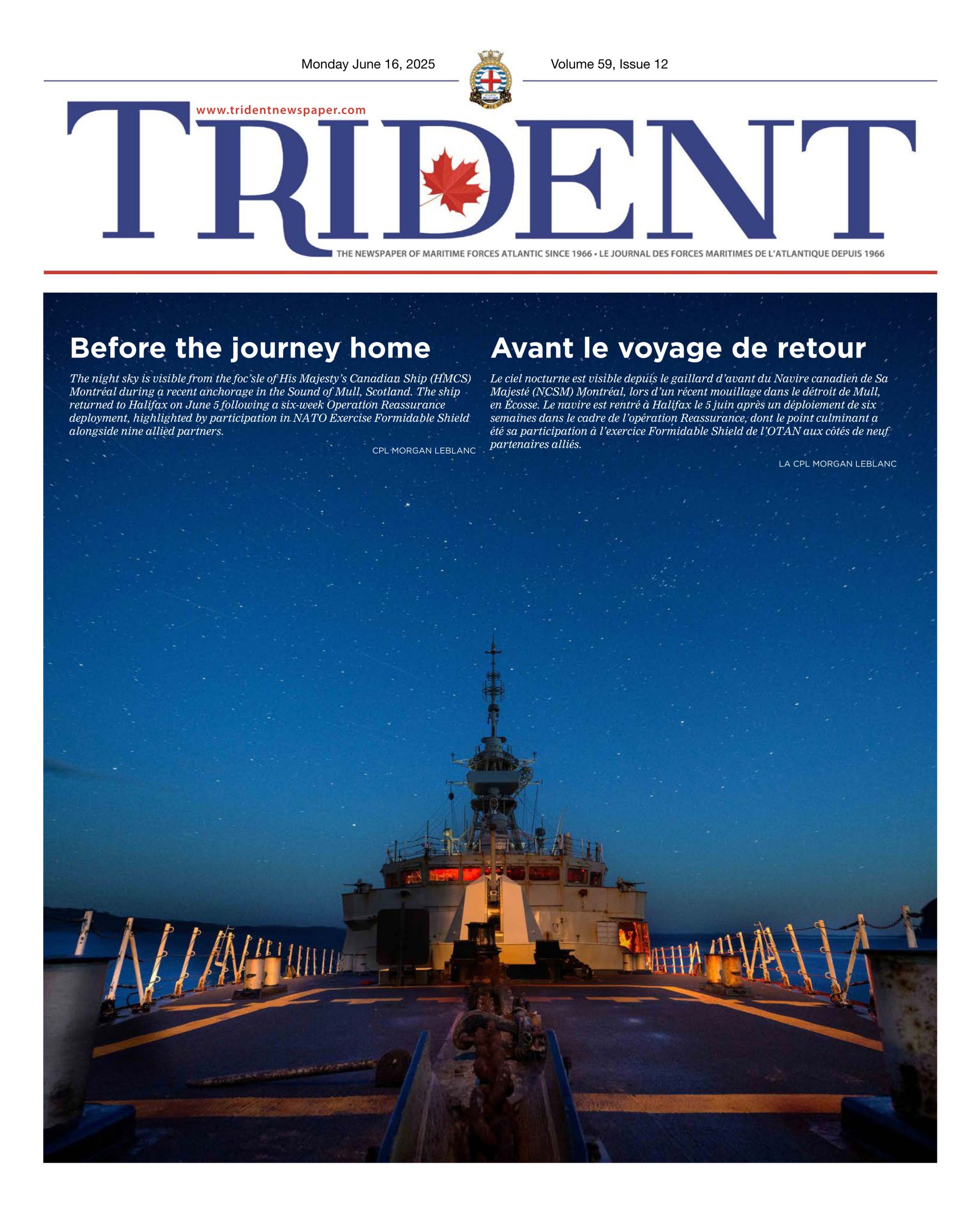
RYAN MELANSON, L'ÉQUIPE DU TRIDENT
Training at DCTF Kootenay meant to prevent future tragedies
Ryan Melanson,
L’équipe du Trident

RYAN MELANSON, L'ÉQUIPE DU TRIDENT
The Royal Canadian Navy’s Damage Control Training Facility (DCTF) Kootenay exists as a space for today’s sailors to train for potential emergencies at sea, as well as a living memorial to those who died serving in the facility’s namesake ship in 1969.
“As sailors, we always heard and learned about the HMCS Kootenay explosion when we did our training. It felt very natural when we got the facility that DCTF Kootenay would be the proper name,” said Cdr Danny Croucher, who oversees training as Commandant of Naval Fleet School (Atlantic).
The DC school has been open since 2002, but as the RCN community marks the 50-year anniversary of the HMCS Kootenay explosion this year, it has also used the opportunity to highlight the state of the art facility that takes its name from the ship. The Navy also recently invited media out to Herring Cove to see the training firsthand and meet some of the students and instructors.
“Those sailors on Kootenay would have had the basic training, but we’ve gone far beyond that, and there’s a lot of new tools that come out every year regarding damage control, so we have to make sure our people are always up to date with the tools available to them to stop damage and save their fellow sailors,” said LCdr Andrew Cumming, Commanding Officer at DCTF Kootenay.
The facility teaches 12 core courses on topics like fighting floods and fires, hazardous material cleanup, and monitoring and assessing dangers while at sea. Some of these courses simulate real-life scenarios – being in the school’s flood tank feels and looks like the below-deck areas of a ship, and students are forced to put their training to the test, plugging holes and performing other tasks as water fills the area. They’re not in any danger, but as the water rushes in to the dark room and quickly rises to waist level, it’s easy to forget that.
“Hopefully we won’t see this type of gearbox explosion like Kootenay ever again, but we can potentially take battle damage or end up in other scenarios where they could be fires or floods,” LCdr Cumming said.
“If it was to ever happen again, this intensive training will help minimize the impact on people and some of the after effects, which would hopefully lead to a lower number of casualties.”
The facility also includes similar simulation rooms that focus on fire, rather than water, gas mask training areas with real tear gas, a model helicopter for further fire training, and plenty of classroom and teaching space.
In DCTF Kootenay’s Battle Damage Control Simulation room, MS Nicholas Earle showed off the new technology that allows sailors throughout a ship to access the same digital map in each section, highlighting any potential dangers or closed-off areas to help inform colleagues in the event of an emergency. It’s a step up from the whiteboards and grease pencils that previously served a similar function.
“We wanted to show how far we’ve come in being able to monitor damage on the ship,” MS Earle said.
“When the explosion in Kootenay happened, people didn’t really know what was going on, and they certainly didn’t have this type of central location when they could get information about the ship. It’s a huge improvement.”
While today’s sailors are far removed from the Navy of 1969 and the technologies of that era, the explosion in HMCS Kootenay is impossible to ignore for students at the DCTF. The halls are lined with news articles, photos, and other mementos related to the ship and its crew, including a handmade scale model replica. The facility also hosts reunion events annually for members of the Kootenay crew, who always enjoy visiting and meeting with the staff.





